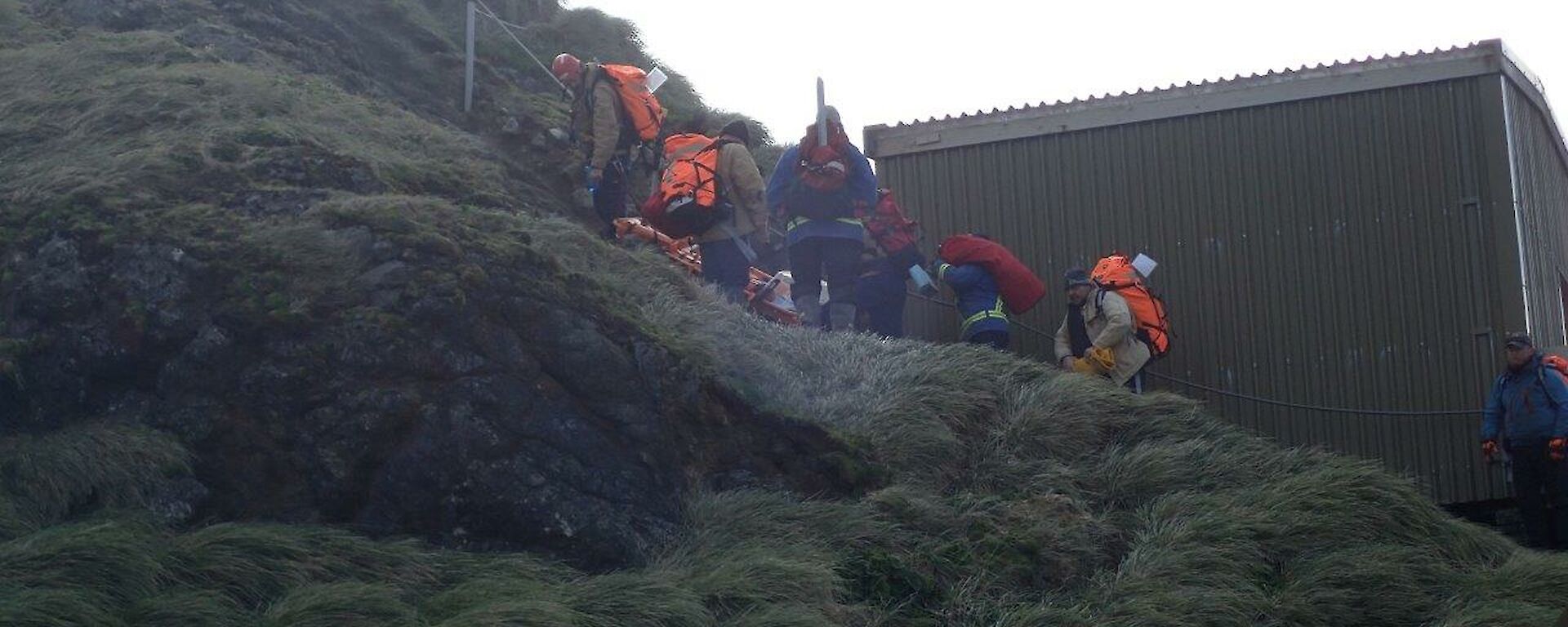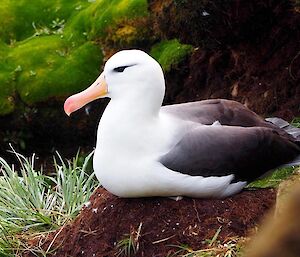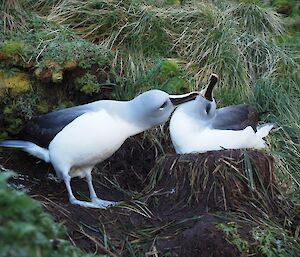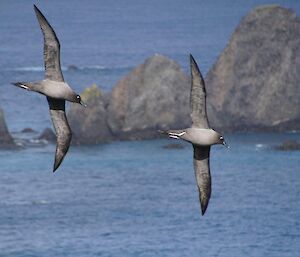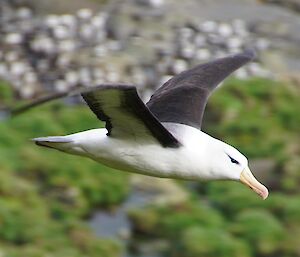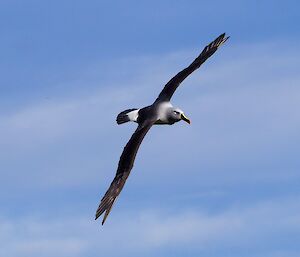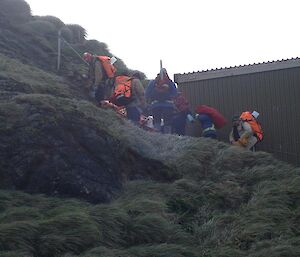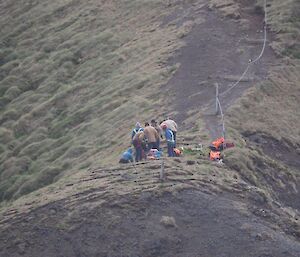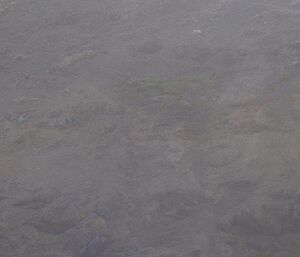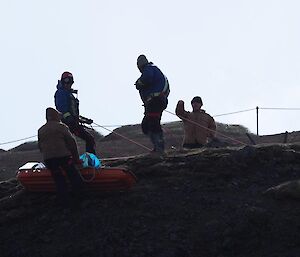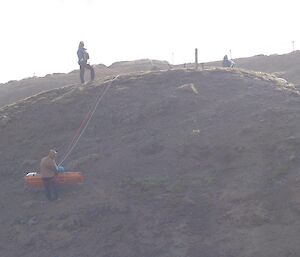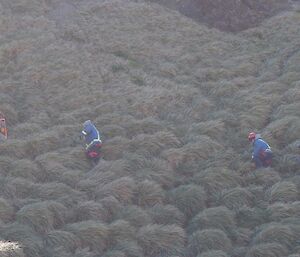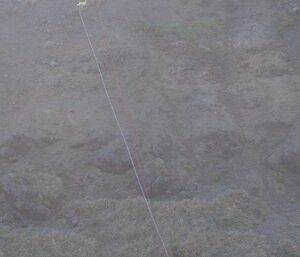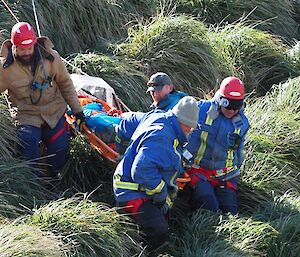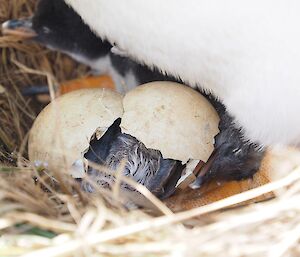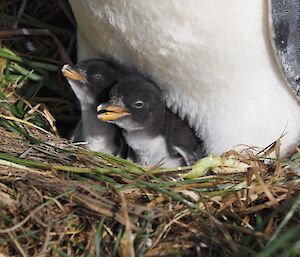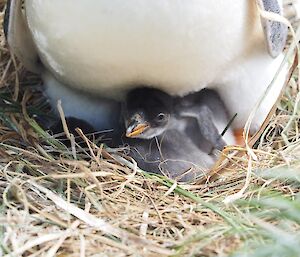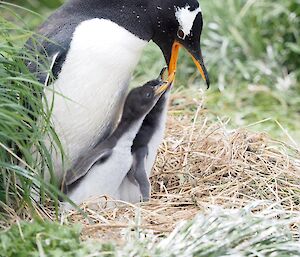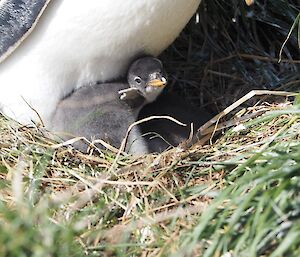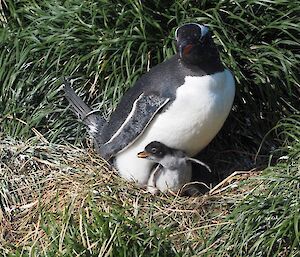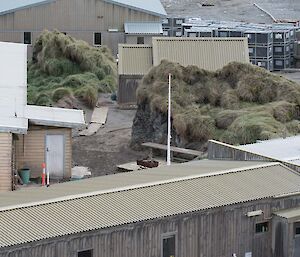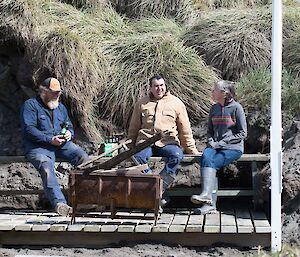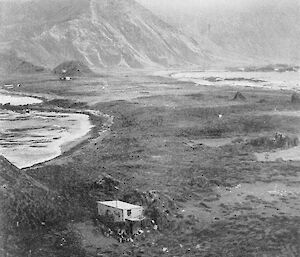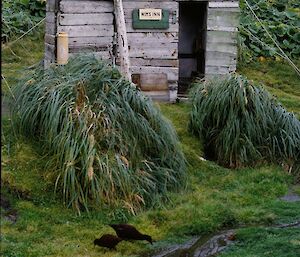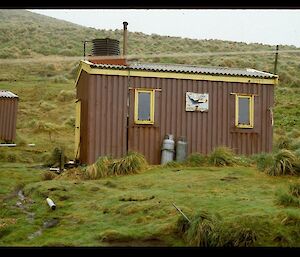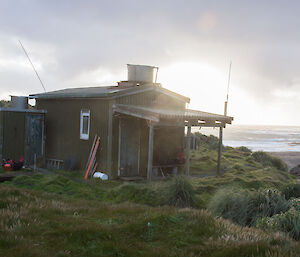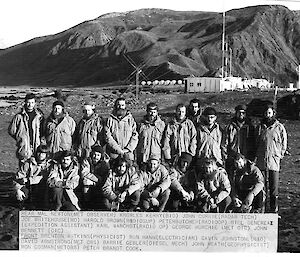Over the past couple of weeks the signature sound of the light–mantled albatross call has returned to station. As the island comes alive, the light–mantled albatross, along with the black–browed albatross and grey–headed albatross return to the slopes of Macquarie Island to breed. The wandering albatross adults will also return soon. Last week field biologist Kim and wildlife ranger Marcus went south to begin the summer monitoring program.
The light–mantled albatross breed all around the island and expeditioners often see them flying around and nesting near tracks or huts. With an estimated 2800 breeding pairs they are the most numerous albatross species on the island. The black–browed and grey–headed albatrosses only breed in the remote southwest corner of the island and are more elusive.
With around 40 pairs of black–browed albatross breeding on the island they are sometimes seen foraging off the east coast of station. The beautiful grey–headed albatross with their brightly coloured bills are rarely seen and last year around 100 pairs bred on Macquarie Island.
The global populations of these species are in decline with grey–headed albatross internationally listed as an endangered species, and both black–browed and light–mantled albatross listed as near threatened.
Over the season the breeding status of all albatross will be monitored to collect data crucial for determining population trends that update the conservation status of theses species and fulfil Australia’s international obligation as a signatory to agreement on the Conservation of Albatross and Petrels (ACAP). The work conducted on Macca is important to understand and conserve these species and the team feel privileged to observe these amazing creatures.
Kim Kliska

